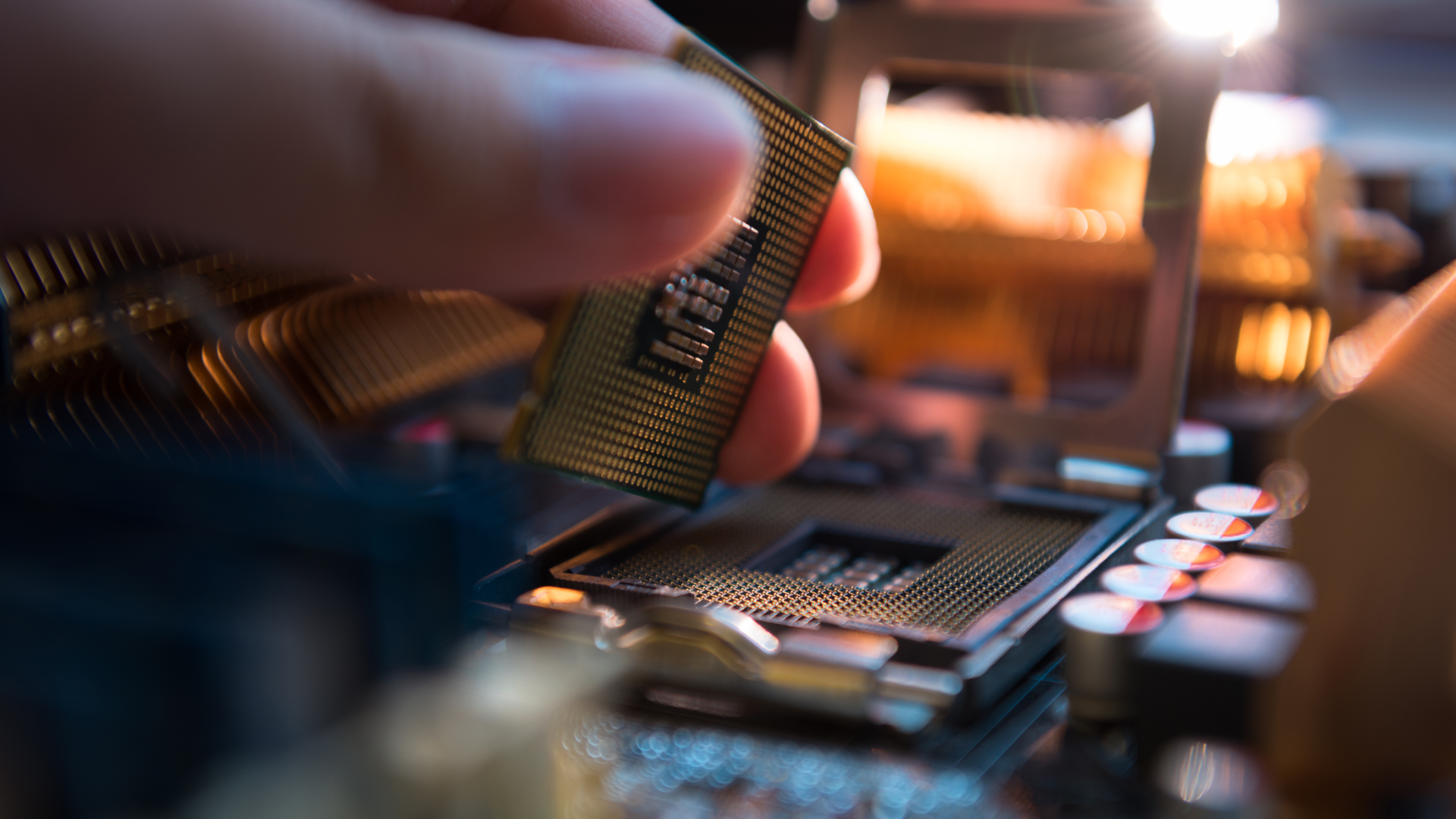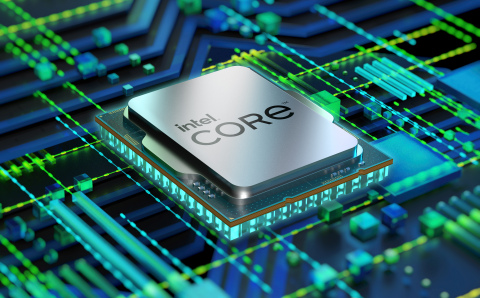Intel’s 10nm Alder Lake CPUs look set to deliver a major performance boost
The desktop chips are said to benefit from a hybrid configuration combining high-power and high-efficiency cores


Intel's forthcoming 12th-gen Alder Lake CPUs will benefit from a significant performance boost against current-generation chips thanks to its redesigned architecture, a leak has suggested.
Leaked slides suggest Intel’s 10nm Alder Lake processors will be twice as fast in multi-threaded workloads thanks to Gracemont Cores while boasting a 20% single-threaded performance boost in light of the new Golden Cove core design. It’s unclear, however, whether Intel is measuring these touted improvements against the performance of its Tiger Lake or Rocket Lake CPUs.
The 10nm enhanced SuperFin CPUs benefit from these performance enhancements because it features a combination of eight small, high-efficiency Gracemont cores and eight big, high-performance Golden Cove cores, according to VideoCardz.
The 12th-gen Intel Core Alder Lake chips, designed to be fitted into desktop PCs, were first teased at CES in January, with the chipmaker pencilling them in for a launch during the second half of 2021.
The company claimed, at the time, that these CPUs would be its most power-scalable yet, and would represent a significant breakthrough in x86 architecture. They will also be the first to be built on Intel’s enhanced version of 10nm SuperFin design, which the leaked slides detail in far more depth.
The leaks also point to support for PCI Express Gen4 and Gen5, as well as support for DDR4 and DDR5 RAM, Wi-Fi 6 and Thunderbolt 4. Mobile CPUs based on the Alder Lake architecture will also benefit from LPDDR4 and LPDDR5 RAM support.
Rumours have suggested that Intel’s Alder Lake CPUs would benefit from this redesigned architecture, with a mix of high-power and high-efficiency cores. Chinese publication HKEPC, for instance, echoed these recent leaks in February with a claim that the 10nm CPUs would offer a 20% performance boost.
Get the ITPro daily newsletter
Sign up today and you will receive a free copy of our Future Focus 2025 report - the leading guidance on AI, cybersecurity and other IT challenges as per 700+ senior executives
The hybrid configuration would be designed in a similar way to ARM’s big.LITTLE architecture, although this configuration is normally used in mobile devices, not high-performance machines such as desktop PCs.
Intel raised eyebrows when first revealing it would pursue this hybrid configuration, with sceptics doubting whether desktop CPUs would reap any benefit from the high-efficiency Gracemont cores. This is because these small, high-efficiency units are normally fitted into notebook CPUs to reduce power consumption and preserve battery life.
AMD’s CVP and product CTO, Joe Macri, in November, even made a dig at this form of hybrid architecture, questioning its purpose and merits if designed for desktop CPUs, according to PC Gamer.
“Is the goal power efficiency? Is the goal more performance? Is the goal just marketing, 'I want more core count', regardless of what it does for the other two variables?,” he said. "At AMD, the marketing one we're going to throw out the window. We're not going to do it just to have a bigger number."
The Alder Lake CPUs will be Intel’s first desktop CPUs to feature a 10nm process node, alongside being the first desktop processors to feature Intel's hybrid configuration.

Keumars Afifi-Sabet is a writer and editor that specialises in public sector, cyber security, and cloud computing. He first joined ITPro as a staff writer in April 2018 and eventually became its Features Editor. Although a regular contributor to other tech sites in the past, these days you will find Keumars on LiveScience, where he runs its Technology section.
-
 Should AI PCs be part of your next hardware refresh?
Should AI PCs be part of your next hardware refresh?AI PCs are fast becoming a business staple and a surefire way to future-proof your business
By Bobby Hellard
-
 Westcon-Comstor and Vectra AI launch brace of new channel initiatives
Westcon-Comstor and Vectra AI launch brace of new channel initiativesNews Westcon-Comstor and Vectra AI have announced the launch of two new channel growth initiatives focused on the managed security service provider (MSSP) space and AWS Marketplace.
By Daniel Todd
-
 Replace your NAS device before you find a problem – don’t wait for things to go wrong
Replace your NAS device before you find a problem – don’t wait for things to go wrongOpinion After years of excellent service, retiring a Synology NAS server saw a drastic improvement in speed and functionality
By Jon Honeyball
-
 How do laser printers work?
How do laser printers work?In-depth If you’re scratching your head wondering how laser printers work, then we’ve got all the answers here
By Zach Marzouk
-
 LED vs laser printers: Which is better for business?
LED vs laser printers: Which is better for business?In-depth Laser and LED printer technology is similar, but each come with their own unique benefits that could make them best for your company
By Rory Bathgate
-
 One-day IT projects to improve your business network
One-day IT projects to improve your business networkIn-depth Not all IT tasks take years to complete. We outline nine short, smart networking projects that can bring immediate benefits
By Steve Cassidy
-
 Compatible vs genuine ink cartridges: Is compatible ink as good as original?
Compatible vs genuine ink cartridges: Is compatible ink as good as original?In-depth Make sure you buy the right kind of ink cartridge for your printer
By Zach Marzouk
-
 Intel launches 12th-gen Alder Lake processors optimised for Windows 11
Intel launches 12th-gen Alder Lake processors optimised for Windows 11News The chip company promises performance boosts of up to 37% on resource-heavy tasks
By Zach Marzouk
-
 Cloudflare ditches Intel Xeon CPUs over “enormous” energy consumption
Cloudflare ditches Intel Xeon CPUs over “enormous” energy consumptionNews The firm’s 11th generation servers will be fitted with AMD EPYC 7713 CPUs instead
By Keumars Afifi-Sabet
-
 Intel's Rocket Lake-S desktop CPUs set to arrive in 2021
Intel's Rocket Lake-S desktop CPUs set to arrive in 2021News The 14nm CPUs will provide a double-digit performance boost, but others raise questions after AMD’s shift to 7nm chips
By Keumars Afifi-Sabet